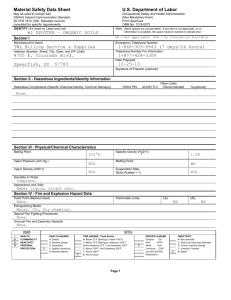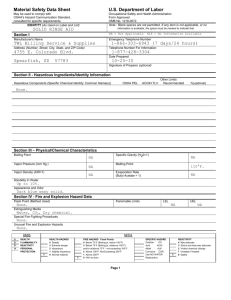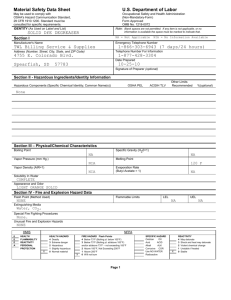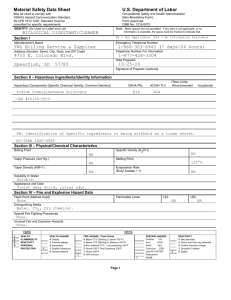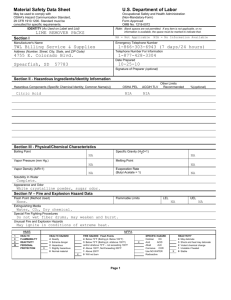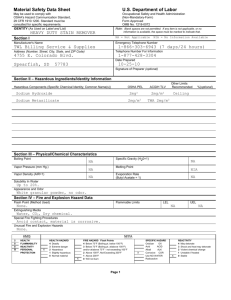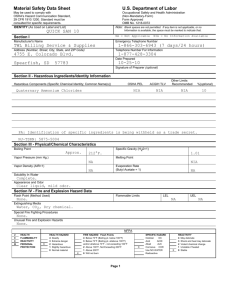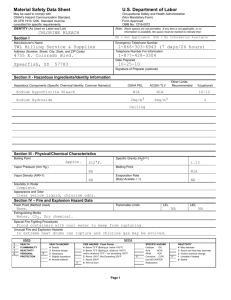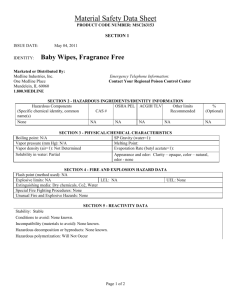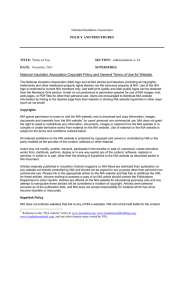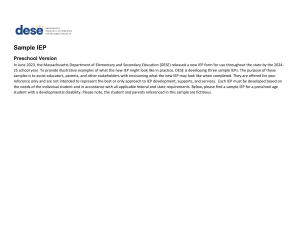MSDS Template - TWL Supplies
advertisement
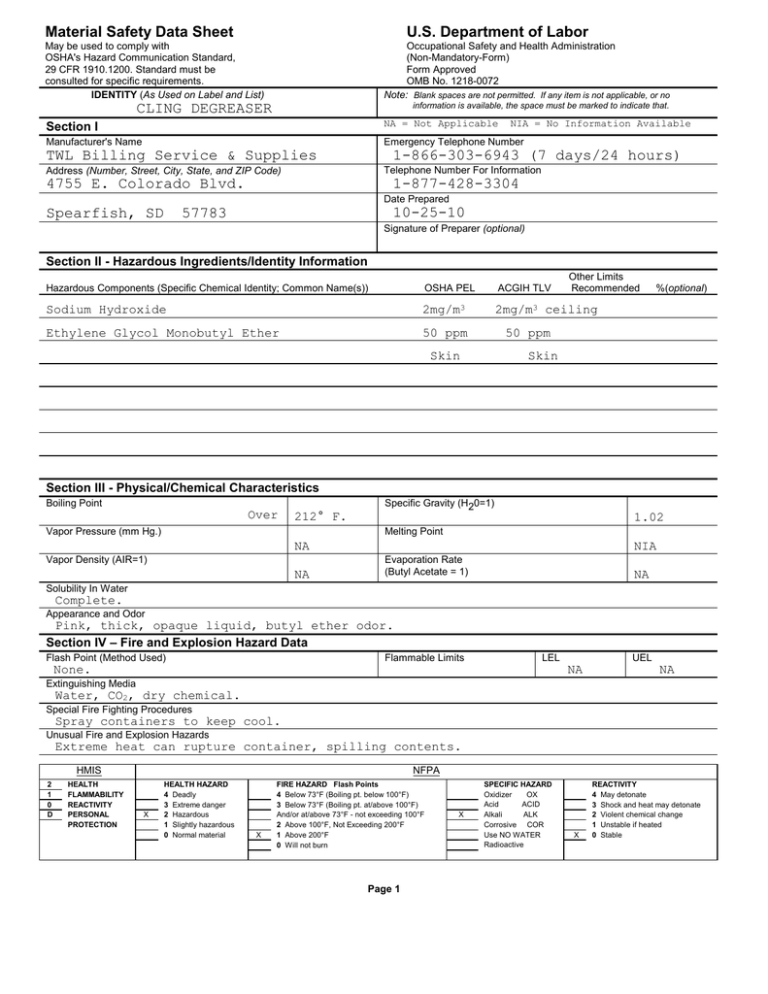
Material Safety Data Sheet U.S. Department of Labor May be used to comply with OSHA's Hazard Communication Standard, 29 CFR 1910.1200. Standard must be consulted for specific requirements. IDENTITY (As Used on Label and List) Occupational Safety and Health Administration (Non-Mandatory-Form) Form Approved OMB No. 1218-0072 Note: Blank spaces are not permitted. If any item is not applicable, or no CLING DEGREASER information is available, the space must be marked to indicate that. Section I NA = Not Applicable Manufacturer's Name Emergency Telephone Number Address (Number, Street, City, State, and ZIP Code) Telephone Number For Information TWL Billing Service & Supplies NIA = No Information Available 1-866-303-6943 (7 days/24 hours) 1-877-428-3304 4755 E. Colorado Blvd. Date Prepared Spearfish, SD 10-25-10 57783 Signature of Preparer (optional) Section II - Hazardous Ingredients/Identity Information Hazardous Components (Specific Chemical Identity; Common Name(s)) OSHA PEL ACGIH TLV Sodium Hydroxide 2mg/m3 2mg/m3 Ethylene Glycol Monobutyl Ether 50 ppm Other Limits Recommended %(optional) ceiling 50 ppm Skin Skin Section III - Physical/Chemical Characteristics Boiling Point Over 212° F. Vapor Pressure (mm Hg.) Specific Gravity (H20=1) 1.02 Melting Point NA Vapor Density (AIR=1) NA NIA Evaporation Rate (Butyl Acetate = 1) NA Solubility In Water Complete. Appearance and Odor Pink, thick, opaque liquid, butyl ether odor. Section IV – Fire and Explosion Hazard Data Flash Point (Method Used) Flammable Limits None. LEL NA UEL NA Extinguishing Media Water, CO2, dry chemical. Special Fire Fighting Procedures Spray containers to keep cool. Unusual Fire and Explosion Hazards Extreme heat can rupture container, spilling contents. HMIS 2 1 0 D HEALTH FLAMMABILITY REACTIVITY PERSONAL PROTECTION NFPA X HEALTH HAZARD 4 Deadly 3 Extreme danger 2 Hazardous 1 Slightly hazardous 0 Normal material X FIRE HAZARD Flash Points 4 Below 73°F (Boiling pt. below 100°F) 3 Below 73°F (Boiling pt. at/above 100°F) And/or at/above 73°F - not exceeding 100°F 2 Above 100°F, Not Exceeding 200°F 1 Above 200°F 0 Will not burn Page 1 X SPECIFIC HAZARD Oxidizer OX Acid ACID Alkali ALK Corrosive COR Use NO WATER Radioactive X REACTIVITY 4 May detonate 3 Shock and heat may detonate 2 Violent chemical change 1 Unstable if heated 0 Stable (CONTINUED) – CLING DEGREASER Section V - Reactivity Data Stability Unstable Conditions to Avoid X Stable Incompatibility (Materials to Avoid) None. Hazardous Decomposition or Byproducts None. Hazardous Polymerization May Occur Conditions to Avoid X Will Not Occur Section VI - Health Hazard Data Routes(s) of Entry: Inhalation? Skin? Atomized spray Ingestion? NO NO Health Hazards (Acute and Chronic) ACUTE – chemical burns, blindness, stomach disorder. Carcinogenicity: NTP? NIA Signs and Symptoms of Exposure EXTERNAL – chemical burns. CHRONIC – NIA. IARC Monographs? NIA OSHA Regulated? NIA INTERNAL – burns in mouth and throat. Medical Conditions Generally Aggravated by Exposure Open sores or wounds. Emergency and First Aid Procedures EXTERNAL - thoroughly rinse with water for at least 15 minutes. Get medical attention. INTERNAL – drink a large quantity of milk, raw eggs or water. Get immediate medical attention. Section VII – Precautions for Safe Handling and Use Steps to Be Taken in Case Material is Released or Spilled Mop or wipe up excess. Rinse to the sewer per Federal, State and Local regulations. Waste Disposal Method To sewer per Federal, State, and Local regulations. Precautions to Be Taking in Handling and Storing Keep closed when not in use. Other Precautions Avoid contact. Caustic/corrosive material. Section VIII – Control Measures Keep out of reach of children. Respiratory Protection (Specify Type) Use 3M, 5 micron, particle maski if sprayed or atomized. Ventilation Local Exhaust Special Mechanical (General) Other NA NIA NIA NIA Protective Gloves Rubber or vinyl recommended. Eye Protection Safety glasses, goggles recommended. Other Protective Clothing or Equipment Rubber apron recommended. Work/Hygienic Practices Always wash hands after handling. Page 2
